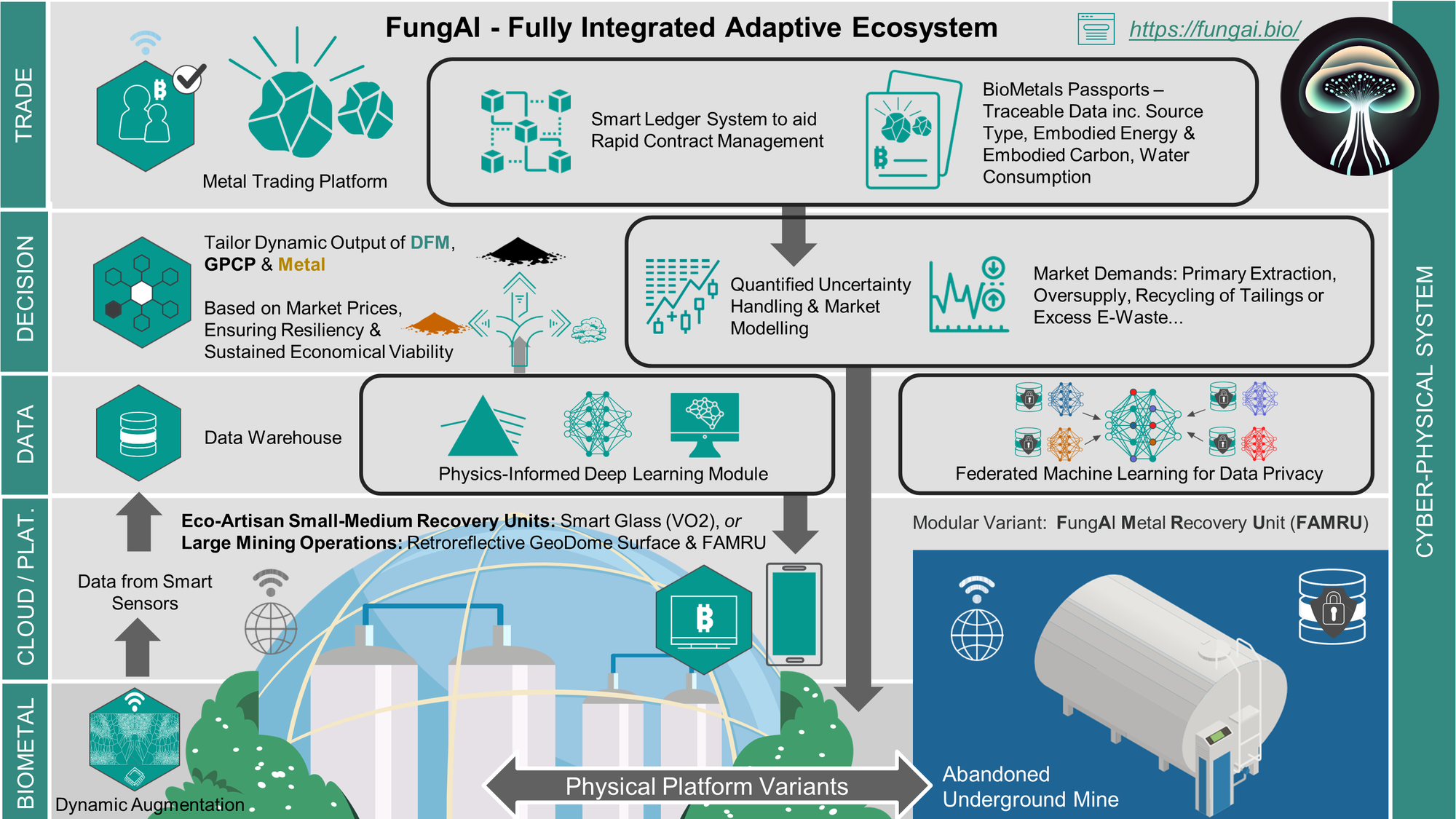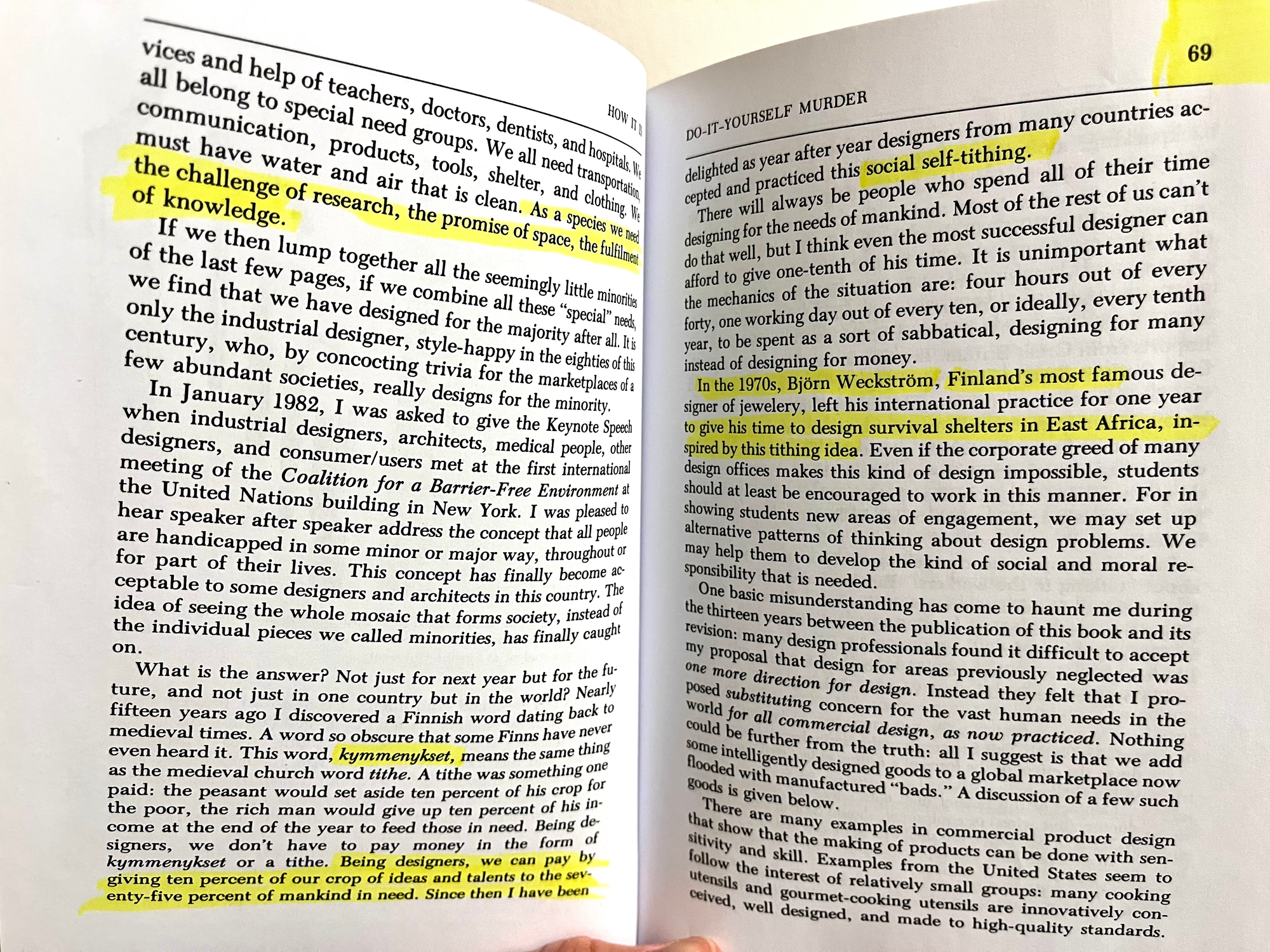Kymmenykset Initiatives

This is very much a work-in-progress page, whereby I can drop my initiatives within the sustainability and regeneration space. The ethos behind this is very much captured in Victor Papanek's book 'Design for the Real World: Human Ecology and Social Change'. We could call it “social self-tithing” through art-form (and it parallels other terms within other cultures and belief systems), but in essence, it manifests itself as an altruistic desire to design solutions for the sake of addressing the systemic needs of Earth as an interconnected biome (humans, flora, fauna etc.).

From a personal standpoint, my list is in its infancy, but I do intend to build on this.
Bio-Centric Cyber-Physical Systems

1 - FungAI
FungAI was designed with strictly passive design principles and has a very low energy-intensity. The FungAI Biome uses smart-glass, which helps maintain a passively-stable ambient temperature within the geodesic-dome, which also serves to equalize the temperature throughout the internal volume. The transducers for the ultrasound and augmenting smart sensors, could be powered by a few solar panels, hence the energy requirements for the FungAI process are low. The fungi in focus are ones that produce epigeous & hypogenus sporocarps, which ensures that the non-metal by-products are value-generators and congruent with the eco-economy.
Video summary: https://youtu.be/HFLkKEmGNTs
